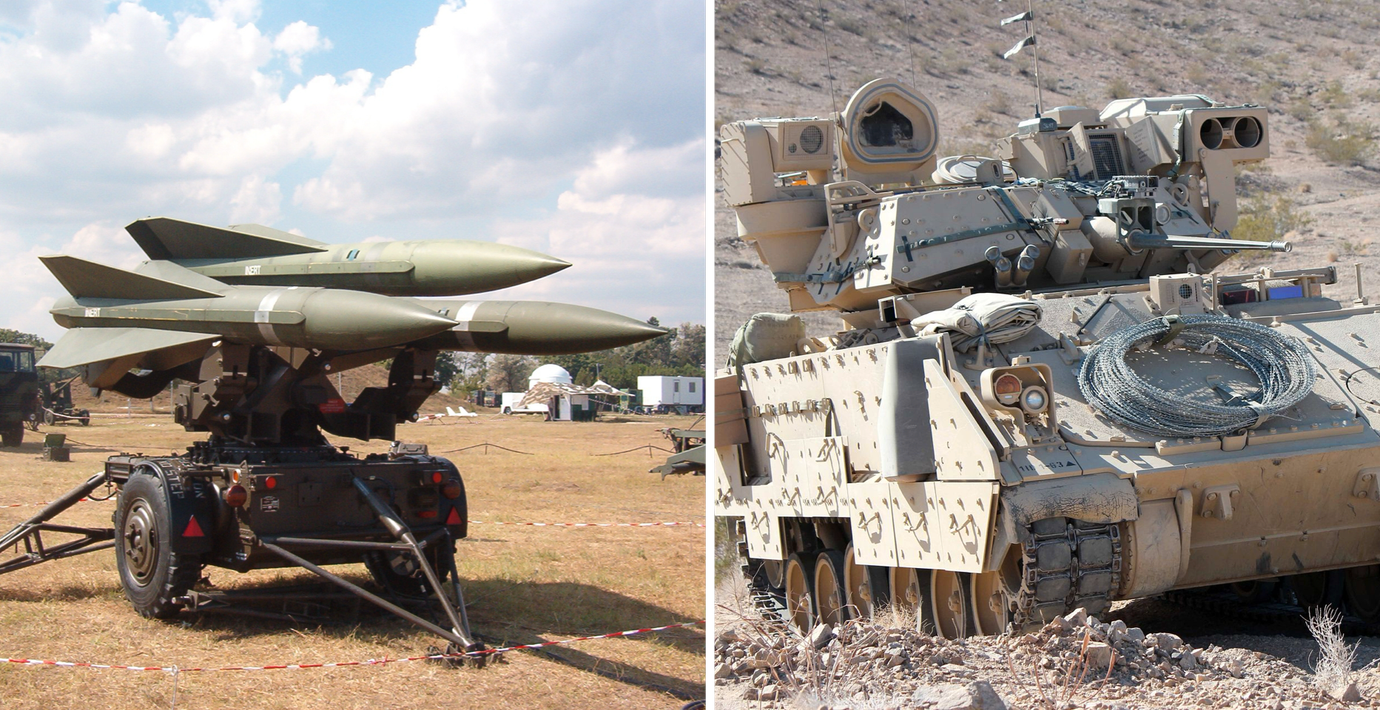
USA tillåter vapen för 322 miljoner till Ukraina
USA godkände på onsdagen försäljning av vapen och försvarsutrustning till Ukraina till ett värde av 322 miljoner dollar, motsvarande över tre miljarder kronor, rapporterar AFP.
Försäljningen gäller luftvärnssystemet MIM-23 Hawk och stridsfordonet Bradley.
Hawk-systemen och dess underhåll kommer kosta upp till 172 miljoner dollar, medan Bradley-utrustningen går loss på upp till 150 miljoner dollar, enligt US Defense Security Cooperation Agency.
bakgrund
Bradley Fighting Vehicle
Wikipedia (en)
The Bradley Fighting Vehicle (BFV) is an American tracked armored fighting vehicle of the United States developed by FMC Corporation and now manufactured by BAE Systems Land & Armaments, formerly United Defense. It is named for U.S. General Omar Bradley.
The Bradley is designed to transport infantry or scouts with armor protection, while providing covering fire to suppress enemy troops and armored vehicles. Variants include the M2 Bradley infantry fighting vehicle and the M3 Bradley reconnaissance vehicle. The M2 holds a crew of three—a commander, a gunner and a driver—along with six fully equipped soldiers. The M3 mainly conducts scout missions and carries two scout troopers in addition to the regular crew of three, with space for additional BGM-71 TOW missiles.
In 2014, the U.S. Army selected BAE Systems' Armored Multi-Purpose Vehicle (AMPV) proposal of a turretless variant of the Bradley to replace over 2,800 M113 armored personnel carriers. Some 2,907 surplus Bradleys will be modified to become AMPVs for the U.S. Army.
bakgrund
MIM-23 Hawk
Wikipedia (en)
The Raytheon MIM-23 HAWK ("Homing All the Way Killer") is an American medium-range surface-to-air missile. It was designed to be a much more mobile counterpart to the MIM-14 Nike Hercules, trading off range and altitude capability for a much smaller size and weight. Its low-level performance was greatly improved over Nike through the adoption of new radars and a continuous wave semi-active radar homing guidance system. It entered service with the US Army in 1959.
In 1971 it underwent a major improvement program as the Improved Hawk, or I-Hawk, which made several improvements to the missile and replaced all of the radar systems with new models. Improvements continued throughout the next twenty years, adding improved ECCM, a potential home-on-jam feature, and in 1995, a new warhead that made it capable against short-range tactical ballistic missiles. Jane's reported that the original system's single shot kill probability was 0.56; I-Hawk improved this to 0.85.
Hawk was superseded by the MIM-104 Patriot in US Army service by 1994. The last US user was the US Marine Corps, who used theirs until 2002 when they were replaced with the man-portable short-range FIM-92 Stinger. The missile was also produced outside the US in Western Europe, Japan and Iran. The US never used the Hawk in combat, but it has been employed numerous times by other nations. Approximately 40,000 of the missiles were produced.
Omni är politiskt obundna och oberoende. Vi strävar efter att ge fler perspektiv på nyheterna. Har du frågor eller synpunkter kring vår rapportering? Kontakta redaktionen



